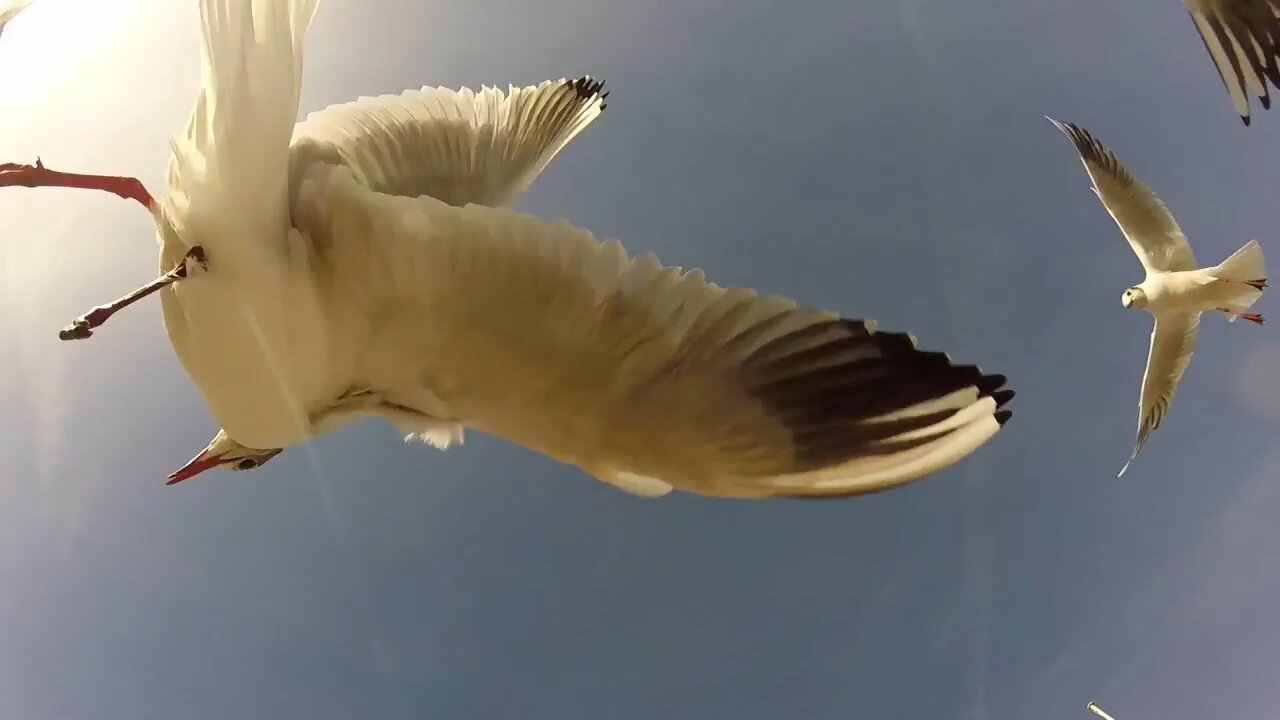Premium Only Content

Chroicocephalus ridibundus Black-Headed Gull In Flight Slow Motion.
The black-headed gull (Chroicocephalus ridibundus) is a small gull that breeds in much of the Palearctic including Europe and also in coastal eastern Canada. Most of the population is migratory and winters further south, but some birds reside in the milder westernmost areas of Europe. Small numbers also occur in northeastern North America, where it was formerly known as the common black-headed gull. As is the case with many gulls, it was previously placed in the genus Larus.
The black-headed gull displays a variety of compelling behaviours and adaptations. Some of these include removing eggshells from the nest after hatching, begging co-ordination between siblings, differences between sexes, conspecific brood parasitism, and extra-pair paternity. They are an overwintering species, found in a variety of different habitats
This gull is 37–44 cm (14+1⁄2–17+1⁄2 in) long with a 94–110 cm (37–43+1⁄2 in) wingspan and weighs 190–400 g (6+3⁄4–14+1⁄8 oz).
In flight, the white leading edge to the wing is a good field mark. The summer adult has a chocolate-brown head (not black, although does look black from a distance), pale grey body, black tips to the primary wing feathers, and red bill and legs. The hood is lost in winter, leaving just two dark spots. Immature birds have a mottled pattern of brown spots over most of the body,[4] and a black band on the tail. There is no difference in plumage between the sexes.[5]
It breeds in colonies in large reed beds or marshes, or on islands in lakes, nesting on the ground.[5] Like most gulls, it is highly gregarious in winter, both when feeding or in evening roosts. It is not a pelagic species and is rarely seen at sea far from coasts.
The black-headed gull is a bold and opportunistic feeder. It eats insects, fish, seeds, worms, scraps, and carrion in towns, or invertebrates in ploughed fields with equal relish.[5] It is a noisy species, especially in colonies, with a familiar "kree-ar" call. Its scientific name means laughing gull.
This species takes two years to reach maturity. First-year birds have a black terminal tail band, more dark areas in the wings, and, in summer, a less fully developed dark hood. Like most gulls, black-headed gulls are long-lived birds, with a maximum age of at least 32.9 years recorded in the wild, in addition to an anecdote now believed of dubious authenticity regarding a 63-year-old bird
-
 LIVE
LIVE
Lofi Girl
3 years agolofi hip hop radio 📚 - beats to relax/study to
135 watching -
 14:12
14:12
BlabberingCollector
1 day agoHBO Show Update, Audible Full Cast Ensemble Updates, Wizarding World Quick Hits!
62.6K3 -
 2:35:48
2:35:48
FreshandFit
14 hours agoShe Watched Our Show, NOW She's Happily Engaged
232K73 -
 1:49:19
1:49:19
Badlands Media
13 hours agoBaseless Conspiracies Ep. 158: Trump’s World Order, Israel’s Secrets & the MAGA Infiltration
77K26 -
 2:54:31
2:54:31
TimcastIRL
8 hours agoIllegal Immigrant ARRESTED After Shooting At DHS, War ERUPTS In Chicago
294K149 -
 5:23:34
5:23:34
Drew Hernandez
1 day agoMARK LEVIN CRASHES OUT & TRUMP SEEKS HOUSING CRISIS SOLUTION
27.5K23 -
 6:29:18
6:29:18
SpartakusLIVE
10 hours ago#1 King of Content leaves your Monday UTTERLY MOTIVATED
50.7K1 -
 2:47:40
2:47:40
Barry Cunningham
11 hours agoBREAKING NEWS: WATCH PARTY WITH PRESIDENT TRUMP ON THE LAURA INGRAHAM SHOW (AND MORE NEWS)
165K44 -
 2:36:50
2:36:50
Blabs Games
17 hours agoLet's Get Those 5 Stars! Jurassic World Evolution 3 Playthrough #7
66.9K5 -
 1:03:59
1:03:59
Flyover Conservatives
1 day ago$117K Paywall to Protect School’s Indoctrination? The Education System’s Biggest Secret w/ Nicole Solas | FOC Show
55.1K2